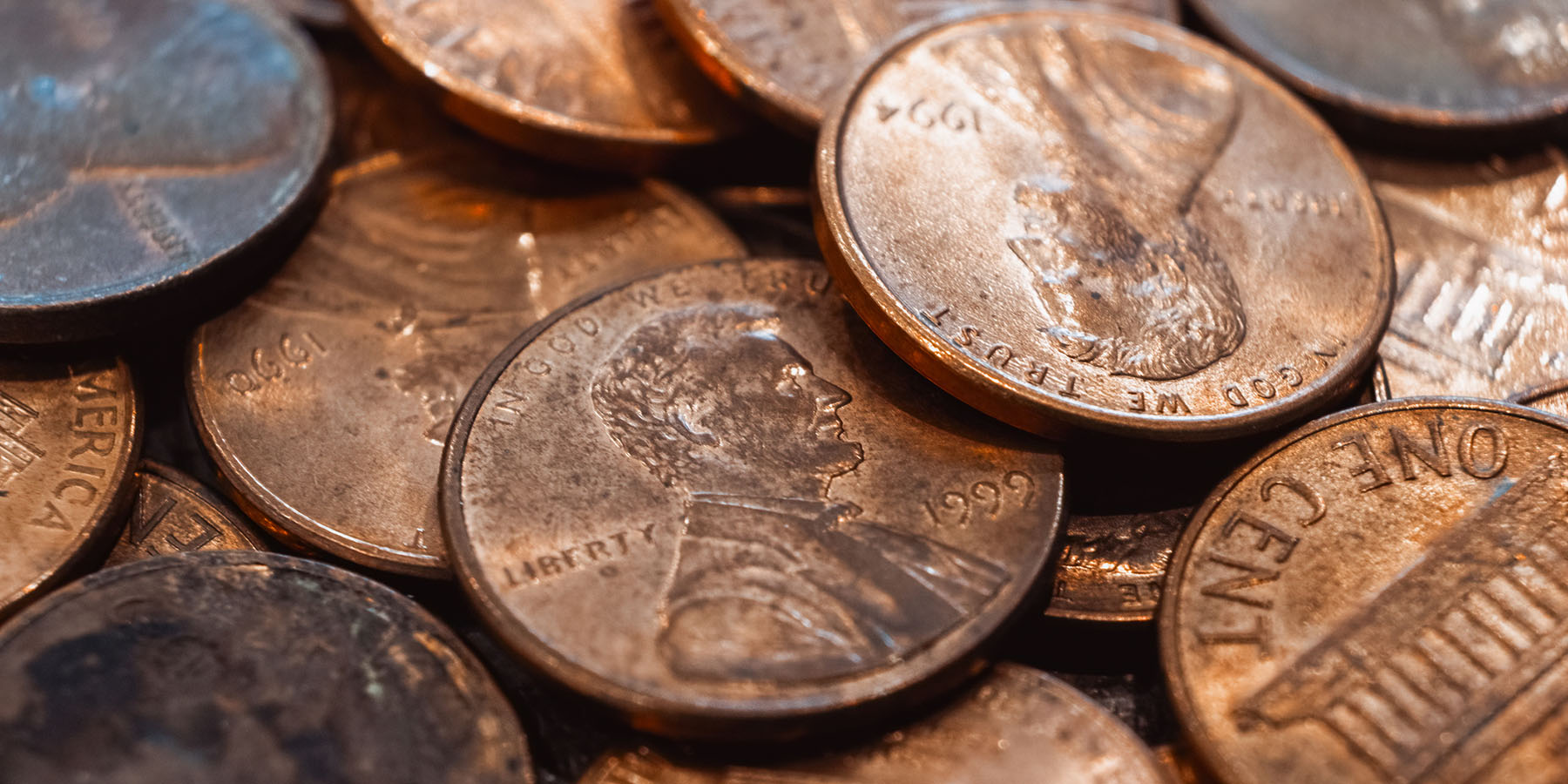What Does the Penny Going Away Mean?

Whether it’s a pile of them on your dresser or a lucky one you find out and about, pennies are everywhere. Recently, the penny has been a major point of discussion after the current U.S. administration’s call to end penny production. But what exactly does this mean for consumers? Will one cent make much of an impact?
The History of the Penny
When you think of pennies, you probably think of President Abraham Lincoln. But the fact is, he wasn’t always displayed on this tiny, copper coin. The penny was one of the first coins to be made by the U.S. Mint in 1792. Its original design contained a woman with flowing hair, intended to symbolize liberty. This was the design for more than 60 years.
By 1857, the penny became smaller, and its composition was changed from pure copper to a composition of copper and some nickel. Alternative designs included a flying eagle featured on one side and a wreath on the other. President Lincoln became the first President to be featured on a coin in 1909, commemorating his 100th birthday.
Victor David Brenner, an accomplished sculptor, engraver, and medalist, designed this portrait of Lincoln, which is still used on the penny today. The art on the reverse side has varied over the years. From 1909 until 1958, it pictured two sheaves of wheat. The Lincoln Memorial was then featured from 1959 to 2008. Today, the penny’s reverse side features the Union Shield, though some of the older versions are still in circulation!
Why is the Penny Going Away?
If the penny is only worth one cent, why does it need to go away? Even though the its monetary value may be small, the penny’s production cost is higher. According to the U.S. Mint, it costs 3.69 cents to produce a single penny. Given this production cost exceeding the penny’s monetary value, the current U.S. Administration has encouraged the Treasury Department to stop making pennies. The Treasury made their last order of blanks, the flat discs of metal used to make pennies, back in May 2025.
Production costs aren’t the only culprit of the penny’s demise. America has become more of a cashless society, with fewer cash transactions being made. Credit and debit cards, mobile wallets, and P2P (peer-to-peer) payment services like Venmo and Apple Pay have become much more common. In fact, there are numerous retailers and services that no longer accept cash.
For now, it’s still a bit too early to tell if ending penny production will create a significant impact. The U.S. Mint estimates a savings balance of $56 million in material costs for stopping production. Pricing is also a factor to think about—will more prices end in increments of five cents to promote nickel use, as opposed to the common $0.99?
Costs of Production for Other Coins
Experts suspect that ceasing penny production could lead to more reliance on nickels, which cost more to produce than pennies! Here’s a breakdown of what other coins cost to make, according to the U.S. Mint:
- A nickel costs nearly $0.14 to produce.
- A dime costs almost $0.06 to produce.
- A quarter costs almost $0.15 to produce.
In short, if the plan for pennies proves to be successful, nickels could be the next coin to face the same fate. Dimes and quarters may have more longevity, as they are worth more than their cost to produce.
What to Do with Pennies
It’s entirely reasonable to wonder if pennies will be worth more and considered rare if they stop getting made. However, there’s nothing signifying these copper coins will become valuable beyond their monetary worth, according to John Feigenbaum, the publisher of Greysheet (a rare coin price guide).
If you find yourself with lots of pennies you don’t intend to use, you can always deposit them at a coin counter to receive the full cash amount they are worth. Several of our branches offer Coin Counter service, where you deposit all your spare change into a machine, where it’s then counted. You’ll receive a receipt with the full value of your change, and can deposit this money into your account, ask for it in cash, or make a donation to our nonprofit organization, the Kids-N-Hope Foundation.
To find an American Heritage branch near you with Coin Counter service, click here.
American Heritage's Penny-A-Purchase Program
Here at American Heritage, we make the most of pennies through our Penny-A-Purchase Program! This initiative supports our nonprofit organization, the Kids-N-Hope Foundation. Through the Penny-A-Purchase Program, $0.01 is donated to Kids-N-Hope with every transaction of an American Heritage debit or credit card.
The Penny-A-Purchase Program started in 2021. As of July 2025, the initiative has raised more than $1.2 million for Kids-N-Hope! All proceeds raised by Kids-N-Hope support music therapy and other pediatric health and life services in local hospitals and nonprofit organizations.
The next time you go to swipe, insert, or tap, consider using one of your American Heritage cards—you’ll make a donation to Kids-N-Hope each time through this simple act!
To learn more about credit cards with American Heritage, click here.
Pennies & American Heritage
While this news sounds like it spells doom for pennies, it will take quite some time to see and feel the effects of the call to end their production. In the meantime, consider transferring your pennies into cash at a local coin counter to make the most of their value! Several of our branches offer Coin Counter service, where you can bring in your change to be counted and transferred for cash. Click here to find a local branch near you. If you’d like, you can even donate these funds to the Kids-N-Hope Foundation.

